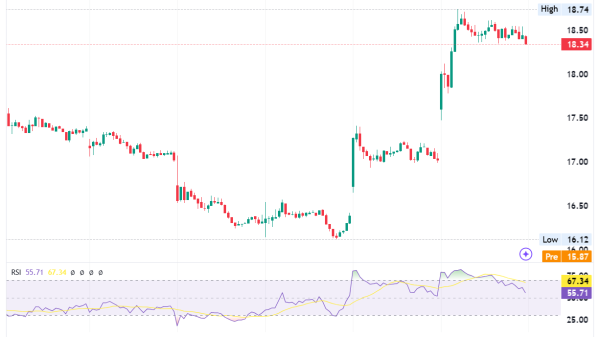Navigating Bull and Bear Markets: Investor Strategies
The terms “bull” and “bear” are more than just animal spirits. They symbolise distinct market conditions that significantly influence the global financial landscape and, consequently, investor portfolios. Understanding the characteristics and implications of bull and bear markets is essential for making informed investment decisions and navigating the complex dynamics of the stock market.
Characteristics of Bull and Bear Markets
What Defines a Bull Market?
A sustained increase in market prices characterises a bull market. Generally accompanied by strong economic indicators such as GDP growth, low unemployment, and rising corporate profits. This period of financial prosperity encourages investors to buy into the market in anticipation of continued gains, further propelling the positive cycle. The psychology in a bull market is charged with optimism, as the expectation of rising prices encourages more buying and investment in riskier assets.
The Dynamics of a Bear Market
Conversely, a bear market signifies a decline of 20% or more from recent highs, reflecting widespread pessimism and negative investor sentiment. Economic downturns, high unemployment, and waning business profits often trigger this market condition. As prices fall, the market sentiment deteriorates, leading to increased selling and reluctance to invest. The bear market is not merely a reflection of declining prices but also a catalyst for economic contraction.
Impact on Investor Psychology and Market Behaviour
Supply and Demand Shifts
During a bull market, the demand for securities outweighs the supply, increasing prices. Investors are keen to buy but less inclined to sell, hoping to maximise returns as the market continues to climb. In contrast, bear markets see a surplus of supply over demand, with more investors looking to offload their holdings to cut losses, leading to further price declines.
Investor Sentiment and Market Sentiment
Investor psychology plays a pivotal role in these market phases. In bull markets, confidence soars; investors are more willing to take risks based on the belief that the upward trajectory will persist. However, fear and pessimism predominate in bear markets, causing investors to seek safety in more stable investments like fixed-income securities, thus exacerbating the downward trend in stock prices.
Economic Indicators and Market Performance
The interconnectedness of the stock market with the broader economy cannot be overstated. Bull markets often coincide with periods of economic expansion, high consumer confidence, and increased spending. Conversely, bear markets typically align with economic recessions, reduced consumer spending, and an overall gloomy economic outlook.
Strategies for Navigating Bull and Bear Markets
Investing in a Bull Market
In a bull market, investors should aim to capitalise on rising prices. Strategies include entering the market early to catch the upward trend and considering investments in sectors that tend to outperform during economic upswings, such as technology and consumer discretionary. It’s also a time when investors can afford to be more aggressive with their portfolios, seeking higher returns by embracing more risk.
Tactics for a Bear Market
The approach in a bear market is markedly different. The focus should shift to the preservation of capital and the minimisation of losses. Investors might consider defensive stocks, such as utilities or consumer staples, which are less affected by economic downturns. Alternatives like fixed-income securities or even short selling can provide returns during market declines. The key is caution and strategic planning to mitigate risks associated with a falling market.
The Long-term Perspective
Identifying whether the market is experiencing a temporary correction or a long-term trend is crucial. Not every downturn signals a bear market, nor does every upswing confirm a bull market. Investors need to look at longer-term economic indicators and market performance to gauge the true market condition.
Navigating bull and bear markets requires an understanding of economic cycles, investor psychology, and market indicators. By recognising the characteristics and implications of these market phases, investors can better strategize their entries and exits. Also aligning their investment decisions with market realities. Whether through strategic buying in a bull market or protective investing in a bear market, the key to successful investing lies in adapting to these ever-changing dynamics. The goal is not merely to survive but to thrive in the fluctuating realms of bull and bear markets.
S&P 500 Outlook 2024-2028: Riding the Bull Market Wave
As we navigate through the currents of financial markets, historical data often serves as a guiding star for forecasting future trends. Since its inception in 1957, the S&P 500 has experienced 10 notable bull markets, each characterized by sustained upward momentum. With the onset of the latest bull market in October 2022, historical patterns suggest promising developments for the index through 2028.
Historical Insights and the Promise of Continuity
A Pattern of Growth
Historically, the S&P 500 has shown remarkable resilience and growth during bull markets. The average bull market spanned approximately five years and four months, delivering an average return of 184%. Particularly striking is the index’s performance in the first two years following the onset of a bull market; data dating back to 1957 shows a 100% probability of the S&P 500 rising during this period, with average and median returns of 61% and 58%, respectively.
Projections for 2024 to 2028
Given the historical average, if the current bull market maintains its course, it could potentially last until around February 2028. This would translate to a total anticipated increase of approximately 144% from the start, equating to an annualized return of about 25%. Such projections offer a bullish outlook for investors, suggesting a period of significant capital appreciation if historical patterns hold true.
Key Historical Bull Markets: A Journey Through Time
Throughout the annals of financial history, several bull markets have made their mark, each propelled by unique factors that drove stock prices to impressive heights. These periods of financial exuberance shaped investor psychology and left lasting impacts on the global economy. Here, we explore some of the most notable bull markets and their distinctive characteristics.
The Roaring Twenties: A Prelude to Despair
One of the earliest and most famous bull markets was during the Roaring Twenties. This era was characterised by a post-war economic boom, where technological advancements and mass production methods led to unprecedented industrial growth and consumer spending. The stock market thrived on speculation, and asset prices soared until the devastating crash of 1929, precipitating the Great Depression. This period remains a classic study of how exuberance can disconnect market valuations from economic fundamentals.
Japan’s Asset Price Bubble: The 1980s Economic Surge
The Japanese bull market of the 1980s was another significant phenomenon, driven by rapid industrial growth and aggressive investment strategies. During this decade, Japan experienced an asset price bubble, particularly in real estate and stock markets, which was further fuelled by overly optimistic business investments and lenient lending practices. However, the bubble burst in the early 1990s, leading to a prolonged economic stagnation that the country still managed to overcome fully.
The Reagan Era: Policy-Driven Market Optimism
The 1980s also witnessed a robust bull market in the United States, often attributed to the economic policies under President Ronald Reagan. Known as the Reagan Bull Market, this period saw substantial tax cuts, deregulation, and increased military spending. Which boosted investor confidence and market valuations, particularly in the technology sector. However, this bull run ended abruptly on Black Monday in October 1987, when the S&P 500 plummeted by over 20% in just a single day.
Dot-Com Bubble: The 1990s Tech Mania
The bull market of the 1990s, driven by the explosion of internet companies and exponential growth in technology, is often referred to as the dot-com bubble. This era was marked by a surge in investments in emerging tech firms, many of which operated under unprofitable business models. The NASDAQ, heavily laden with tech stocks, saw a rise of over 200%. The bubble burst in the early 2000s, leading to significant financial losses for many investors and the collapse of numerous dot-com companies.
The 2009 Financial Recovery: The Longest Bull Market
Initiated in March 2009, following the global financial crisis, this bull market is recorded as the longest in history, lasting until February 2020. Fueled by low-interest rates, recovery in the housing market, and corporate earnings growth, the S&P 500 saw a rise of over 300%. This period highlighted how monetary policy and global economic recovery could synergistically foster a prolonged period of bullish growth.
The Origin of “Bull” Market Terminology
The term “bull market” originates from how a bull attacks by thrusting its horns upward, symbolising the market’s upward trajectory.
Challenges and Considerations
The Unpredictability of Markets
While historical data provides valuable insights, it is critical to approach forecasts with caution. Each market cycle is unique and influenced by many economic, geopolitical, and sector-specific factors. The current global economic environment, still reeling from the impacts of the pandemic and significant inflationary pressures, presents a scenario with no exact historical precedent.
Elevated Valuations and Their Implications
Currently, the S&P 500 trades at about 20 times forward earnings. Surpassing both the five-year average of 18.9 times and the 10-year average of 17.6 times. This premium valuation suggests that the index may face challenges in sustaining its upward trajectory, particularly if earnings growth does not meet expectations. The significant weight of the “Magnificent Seven” stocks in the index further compounds this risk, as their high valuations could lead to greater volatility in the S&P 500’s overall performance.
Navigating the Current Bull Market
Strategic Investment Approaches
Investors should consider diversifying their portfolios to mitigate risk while capitalising on potential growth opportunities within the bull market. Emphasising sectors that are poised for growth in a recovering economy can be a prudent strategy, as can investing in companies with solid fundamentals and sustainable business models.
Long-term Perspectives
Despite the enticing prospects of a bull market, investors should maintain a long-term perspective. The S&P 500’s historical annual return of 10.2% over the past three decades underscores the benefits of a balanced and long-term investment approach. This period includes numerous economic cycles, which have demonstrated that bull markets offer opportunities for significant gains. The broader market performance over time is generally more moderate.
A Blend of Optimism and Caution
As we look towards 2024 and beyond, the S&P 500 presents opportunities and challenges. The potential continuation of the current bull market into 2028 offers a tempting prospect for investors, driven by historical momentum and economic recovery. However, the elevated valuations and unique economic conditions suggest a cautious approach.
Investors are advised to balance optimism with strategic planning, focusing on diversified portfolios and long-term investment horizons. By doing so, they can navigate the complexities of the market while aiming to achieve sustained growth in their investment portfolios. History may provide guidance. However, the future remains a landscape to navigate with confidence and care.
The post Navigating Bull and Bear Markets: Investor Strategies appeared first on FinanceBrokerage.


































